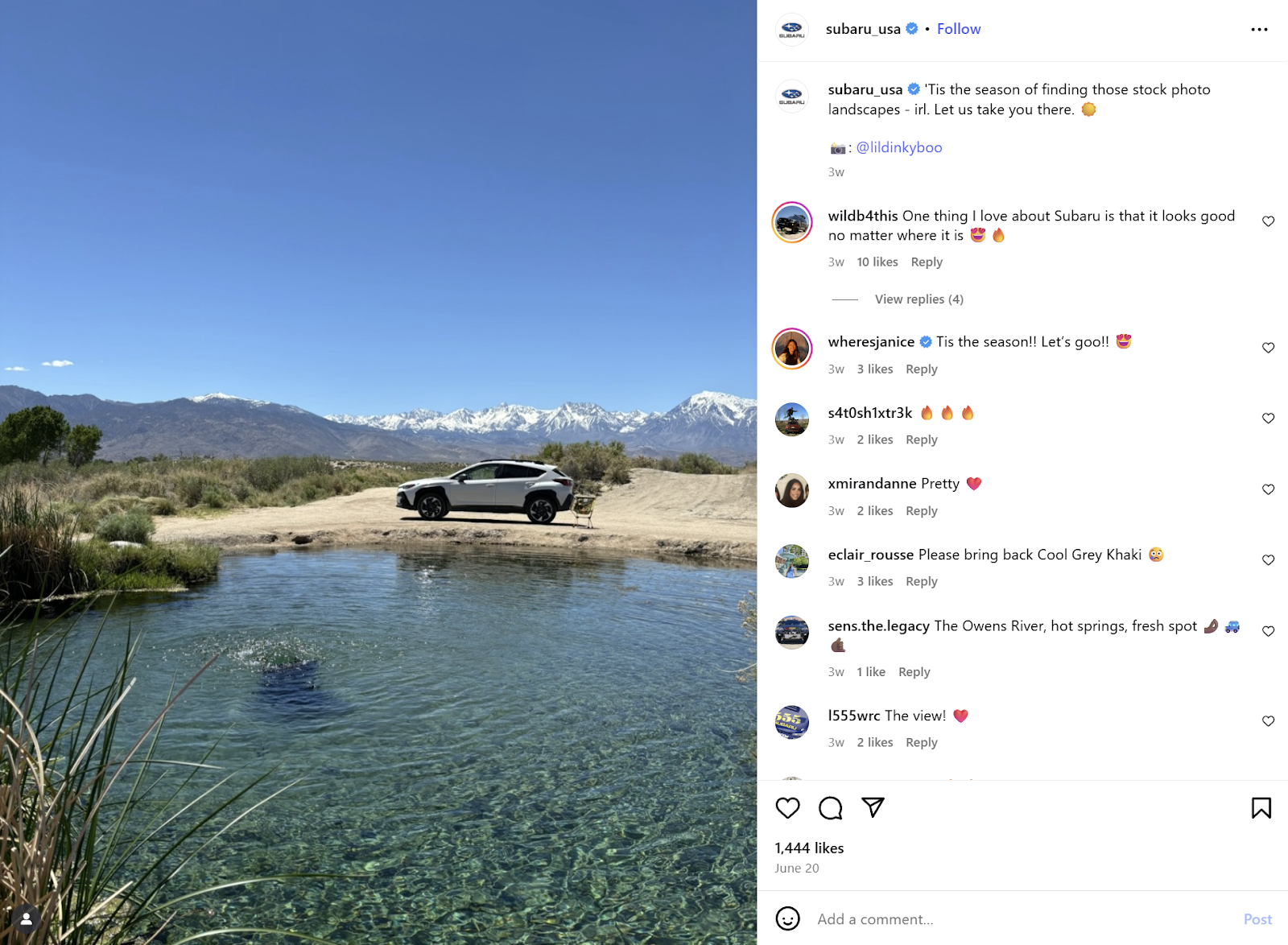How to Create High-Converting Ad Copy That Gets Clicks and Leads
Customers see digital ads practically everywhere these days: in their inboxes, on social media, and even at gas stations. For small businesses, it’s natural to worry that your marketing won’t stand out in this ocean of content. But that’s not true. You just need great copy.
The best copy grabs your audience’s attention — yes, even through all the noise — and inspires them to act. It can make the difference between an okay campaign and one that exceeds all your goals.
You don’t need to be the next Ernest Hemingway, but creating high-converting ad copy does require a little wordsmithing know-how. This article breaks down the characteristics of powerful copy. It also shares practical writing tips and key metrics to help you track your success.
Key Traits of High-Converting Ad Copy
There’s no secret recipe for creating effective ad copy. If there were, everyone would be winning over customers left and right. But excellent copy tends to share a few core elements, including:
- Clarity: Customers shouldn’t have to feel like they’re solving a riddle to understand your ad. Successful copy gets the message across clearly and immediately.
- Emotional appeal: According to a 2024 study, “Advertisements that trigger emotions such as joy, sadness, anger, or fear have a strong impact on customers.” The best ads use powerful language that stirs up some sort of feeling in the audience.
- Relevance: Great ad copy fits the customer’s interests or needs.
- Urgency: Effective copy encourages people to act now, not next week (which often turns into never once they scroll past your ad).
- Value-driven messaging: Why should customers care about a product or service? Strong ads answer this question persuasively, shedding light on their benefits.

Take this Instagram post from Subaru, for instance. The caption says, “Tis the season of finding those stock photo landscapes - irl. Let us take you there. ☀️”
This copy works because it speaks to the audience’s sense of adventure while highlighting the vehicle’s value: taking you to fabulous destinations that look like perfect stock photos. Plus, the phrase “‘Tis the season” adds a little urgency. Get your Subaru now, it suggests, before summer ends.
Common Mistakes That Kill Ad Performance
Understanding the difference between effective and ineffective copy will help you improve your own messaging. Here are a few mistakes and best practices to help you avoid them:
- Vague messaging: Sometimes, marketing teams assume that customers can read their minds, but this subtle approach can backfire. For instance, an ad that claims that tires are “better than the rest” without explaining why probably won’t persuade anyone. Always test your ad campaigns with different audiences to make sure you’re expressing yourself clearly.
- Weak call to action (CTA): Some ads just share information without telling the audience what to do next. Others have generic CTAs, like “Click here” or “Check us out.” Inspire immediate action with explicit CTAs that guide users to the next step, such as visiting a landing page to book an appointment.
- Focusing on features over benefits: It’s easy to get caught up in technical specs or statistics. However, customers typically care more about how your offerings can help them personally. By prioritizing value over the nitty gritty, you’ll boost your click-through rate.
- Keyword stuffing: Search engines and social media platforms use keywords to help match a user’s search query to the right content. But using too many keywords can turn your ad into a nonsensical soup of awkward phrases like “Kansas City best mechanic” and “brake repair budget-friendly.” Instead, attract website traffic by sprinkling in a few keywords naturally and writing for humans, not algorithms.
Proven Copywriting Frameworks That Drive Results
While high-converting ad copy is unique to your brand, you don’t need to reinvent the wheel. Try one of these popular frameworks for your next digital marketing campaign:
AIDA
This method uses storytelling to guide customers through a four-part marketing funnel: Attention, Interest, Desire, and Action. During the interest stage, for instance, an ad could spark curiosity by sharing a heartwarming story about how your product solved a client’s problem. This social proof will leave your audience eager to learn more.
PAS
Within a single ad, you can structure your copy using the Problem-Agitate-Solve framework. Start by acknowledging one of your target audience’s challenges (“Struggling to keep your car clean with pets?”). Use vivid language to build frustration (“Hair, mud — it’s like your last car wash didn’t even happen.). Finally, present your product or service as the solution they’ve been waiting for (“Our detailing crew will have your car spotless in an hour.”).
BAB
For a more positive approach, consider Before-After-Bridge. Like PAS, it begins by describing the audience’s problem, but it quickly shifts to a happy ending.
Begin by describing the before (“Turn up the radio all you want, but you can’t deny those strange engine sounds”) and then the ideal after (“Now, you can drive confidently and safely.”) Finally, describe how your business can bridge those two worlds (“Our repair experts will get to the root of the problem, so you can get back on the road.”).
Crafting Headlines That Stop the Scroll
No matter which framework you choose, your ad should start with an attention-grabbing headline. Make this slogan clear, specific, and emotionally appealing.
Honda’s Facebook page frequently uses strong headlines, such as: “Something, pink, iconic, and FAST is rolling in” and “Electric. Elevated. Effortless.” These sayings are snappy and build intrigue. By contrast, a weak headline might say something generic like “Look at our new model,” which is more likely to make readers yawn than excite them.
Writing CTAs That Inspire Action
Highly effective CTAs connect with readers emotionally and create a sense of FOMO (fear of missing out). Want readers to sign up for your newsletter? Say, “Join our mailing list for exclusive discounts” instead of a bland “Sign up.” If you want the audience to buy something, try, “Protect your family with new tires.”
This direct approach improves conversion rates by making the decision feel personal and timely.
Tracking What Matters: Key Ad Copy KPIs
Even the best ads don’t always lead to an overnight spike in sales, but that doesn’t mean they’re not working. Measure your copy’s effectiveness by tracking digital marketing KPIs, such as:
- Click-through rates
- Conversion rates
- Cost per conversion for paid media
- Quality score
These metrics often reflect your copy’s performance and help you benchmark your ads against competitors. For example, you’ll know that your Instagram ads are working if they have a conversion rate of 1% or higher.
Test, Tweak, Repeat: Why Optimization Never Ends
Customer tastes and trends constantly change, so what hooks people today might not be as successful tomorrow.
A/B testing can help you experiment with different approaches and languages. It involves running two similar but slightly different ads for small audiences to see what gets the best response. For example, you might compare the performance of a playful vs. a dramatic headline.
Use A/B testing and your KPIs to keep refining your copy. As you get more confident and creative with your messaging, your lead generation and sales will improve, too.
Strong Ad Copy Fuels Campaign Success
Learning how to create high converting ad copy takes effort and a willingness to experiment. Get inspiration by studying other companies’ top campaigns. You can also play with different frameworks to see what connects with your audience.
Can’t find the right words? Let the advertising experts at Optimize Digital Marketing team give you a hand. We’ll help you write the perfect messages and run your advertising campaigns. Schedule a consultation to learn more about how we can help you master copywriting and beyond.



